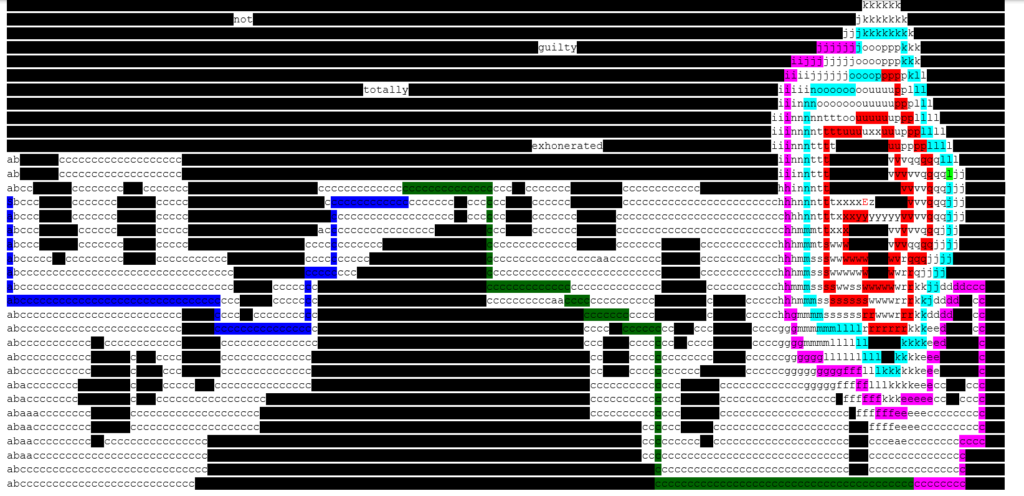Advent of Code 2022, Day 14
Man, I really enjoyed today’s puzzle. Like, a lot. I think because it kind of felt like a game level, and probably also because it’s fluid dynamics and I am totally into Physics and Engineering shit.
For the “Plot” you enter into a cave and discover a cavern with sand falling from the ceiling. The sand accumulates in a pile and “flows” around based on some simple left then right rules. This problem consisted of a few separate but connected steps.
Step one, create an empty “cave”. This was simple enough, especially now that I remember how stupid lists are. Last time I needed to make a grid, I was appending a list and it turns out that Python doesn’t actually copy lists unless you explicitly ask it to. Which is frankly, “Fucking Stupid”. But whatever, list.copy() works too.
Step 2, draw the rocks from the input file. Each line consists of a start note, then a series of connected dots to the end point of a line of rocks.
Step 3, was to pour the sand. Which involves dropping a “chunk” of sand, down until it hits the floor, then flowing it left or right to fill an area. Once the sand starts falling off, then display the count of the total chunks. If I were more clever about my code, I could build a sweet little ASCII animation of each step, but I probably won’t anytime soon because well, I have other things I need to do too.
Part 2 modifies this, by adding a floor, instead of counting the amount of sand until it fills, and falls into the abyss below, now you count until it fills then fills all the way back to the top. This actually screwed me up a bit.
The coordinates given are all large, like, in the 500 range. In order to make my rock formation manageable, I had cut these down by the min max values so the cave was not much wider than the rock formation. The problem is, now I need to accumulate a pile across the floor, so I need the width. Like, a LOT of width. So I had to modify my code all over to bring the width back to my cave matrix.
The code works for Part 1 and Part 2 at once. Basically, it finishes Part 1, like normal, display the output count, and, just for fun, an ASCII image of the filled rocks, then, it just, starts a fresh, slightly modified loop. For the modified loop, the break for “falling off” is removed. Instead, it checks to see if it can move, and if it can’t, before placing the sand block, it verifies if it moved at all by comparing it’s position to the start position. If it hasn’t moved, it breaks the loop, prints the filled screen, and the sand count total.
import math
with open("Day14Input.txt") as file:
data = file.read()
lines = data.split('\n')
def draw_cave(lx, ly):
grid = []
line = []
floor = []
for i in range(0,lx*2):
line.append(".")
for j in range(0,ly+2):
grid.append(line.copy())
for i in range(0, lx * 2):
floor.append("#")
grid.append(floor)
return grid
def draw_rocks(rocks,cave):
for rockline in rocks:
for i in range(len(rockline)-1):
startx = int(rockline[i][0])
starty = int(rockline[i][1])
endx = int(rockline[i+1][0])
endy = int(rockline[i+1][1])
if starty == endy:
xrange = sorted([startx, endx])
for horiz in range(xrange[0],xrange[1]+1):
cave[starty][horiz] = "#"
if startx == endx:
yrange = sorted([starty, endy])
for vert in range(yrange[0], yrange[1]+1):
cave[vert][startx] = "#"
return cave
def show_cave():
for i in cave:
print(" ".join(i))
smallest_x = 100000
smallest_y = 100000
largest_x = -1
largest_y = -1
rocks = []
for line in lines:
sets = line.split(" -> ")
r = []
for n in sets:
nsplit = n.split(",")
if int(nsplit[0]) < smallest_x:
smallest_x = int(nsplit[0])
if int(nsplit[1]) < smallest_y:
smallest_y = int(nsplit[1])
if int(nsplit[0]) > largest_x:
largest_x = int(nsplit[0])
if int(nsplit[1]) > largest_y:
largest_y = int(nsplit[1])
r.append(n.split(","))
rocks.append(r)
# print(f"{smallest_x} {largest_x} | {smallest_y} {largest_y}")
# print(rocks)
cave = draw_cave(largest_x,largest_y)
# show_cave()
rocky_cave = draw_rocks(rocks,cave)
sand_start = 500
rocky_cave[0][sand_start] = "+"
captured = True
sand_count = 0
while captured:
sand_pos = [0,sand_start]
sand_drop = True
while sand_drop:
if sand_pos[0] > len(rocky_cave)-3:
captured = False
sand_drop = False
elif rocky_cave[sand_pos[0]+1][sand_pos[1]] == ".":
sand_pos[0] += 1
elif rocky_cave[sand_pos[0]+1][sand_pos[1]-1] == ".":
sand_pos[0] += 1
sand_pos[1] -= 1
elif rocky_cave[sand_pos[0]+1][sand_pos[1]+1] == ".":
sand_pos[0] += 1
sand_pos[1] += 1
else:
sand_count+=1
rocky_cave[sand_pos[0]][sand_pos[1]] = "O"
sand_drop = False
# show_cave()
print(sand_count)
show_cave()
# Part 1 = 728
#### RESUME FOR PART 2 #####
captured = True
while captured:
sand_pos = [0,sand_start]
sand_drop = True
while sand_drop:
if sand_pos[0] > len(rocky_cave)-1:
captured = False
sand_drop = False
elif rocky_cave[sand_pos[0]+1][sand_pos[1]] == ".":
sand_pos[0] += 1
elif rocky_cave[sand_pos[0]+1][sand_pos[1]-1] == ".":
sand_pos[0] += 1
sand_pos[1] -= 1
elif rocky_cave[sand_pos[0]+1][sand_pos[1]+1] == ".":
sand_pos[0] += 1
sand_pos[1] += 1
else:
if sand_pos == [0,sand_start]:
captured = False
else:
rocky_cave[sand_pos[0]][sand_pos[1]] = "O"
sand_count+=1
sand_drop = False
print(sand_count)
show_cave()
# Part 2 = 27623Josh Miller aka “Ramen Junkie”. I write about my various hobbies here. Mostly coding, photography, and music. Sometimes I just write about life in general. I also post sometimes about toy collecting and video games at Lameazoid.com.
